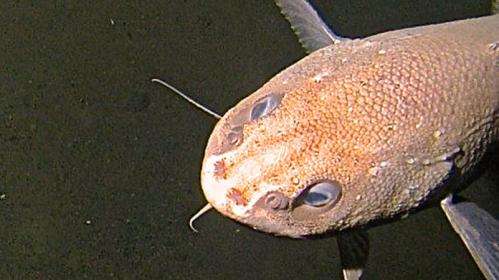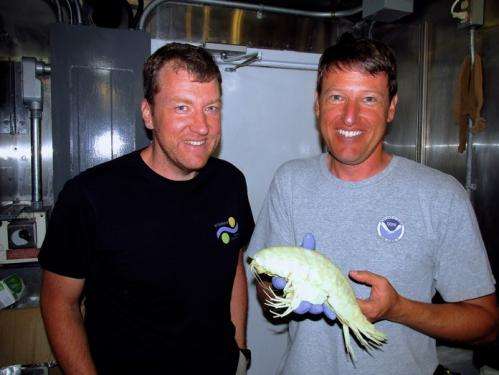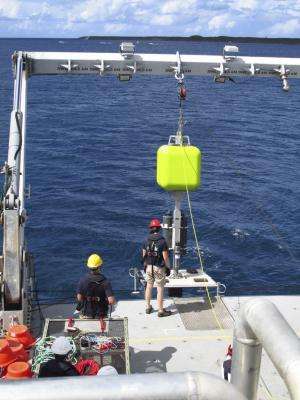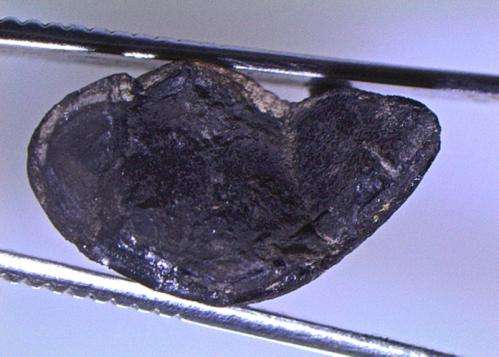New species and surprising findings in the Mariana Trench

The Mariana Trench located in the Western Pacific near Guam hosts the deepest place on earth, and has been the focus of high profile voyages to conquer its deepest point, Challenger Deep. A recent expedition to the Trench onboard Research Vessel Falkor targeted multiple depths and found active thriving communities of animals. The expedition set many new records such as the deepest rock samples ever collected and new species including the deepest fish ever recorded.
This month an international team have returned from the first detailed study of the Mariana Trench aboard Schmidt Ocean Institute's research vessel Falkor. This Hadal Ecosystem Studies (HADES) expedition, led by co-chief scientists Jeff Drazen and Patty Fryer of the University of Hawaii, departed from other deep-sea trench research by sampling a broad spectrum of environments using five deep sea vehicle systems called landers at specifically targeted depths from 5000 m - 10,600 m (16,404 ft. – 34,777 ft.). Rather than solely focusing on the deepest point in the Mariana Trench, a concerted effort was made to gain a better understanding of the interplay between life and geologic processes across the entire hadal zone. Dr. Jeff Drazen, co-chief scientist expressed the drive behind this method "Many studies have rushed to the bottom of the trench, but from an ecological view that is very limiting. It's like trying to understand a mountain ecosystem by only looking at its summit".
The findings from this research will help to answer important questions about Earth's largest and least explored habitat, including what organisms live there and how life adapts to these extreme conditions, and how much carbon in the atmosphere reaches the deep sea and if it affects the food chains there.
New species were discovered on this expedition that will provide insight into the physiological adaptations of animals to this high-pressure environment. Several records for deepest living fish, either caught or seen on video were broken. Setting the final record at 8,143 m, was a completely unknown variety of snailfish, which stunned scientists when it was filmed several times during seafloor experiments. The white translucent fish had broad wing-like fins, an eel-like tail and slowly glided over the bottom. Dr. Alan Jamieson stated that "when findings and records such as these can be broken so many times in a single trip, we really do get the feeling we are at the frontier of marine science."
Additionally, the deepest rock samples ever obtained from the inner slope of the trench represent some of the earliest volcanic eruptions of the Mariana island arc. These rocks can provide significant information on the geology of the trench system.
Wendy Schmidt, co-founder and Vice President of Schmidt Ocean Institute was delighted with the success of the expedition. "Rarely, do we get a full perspective of the ocean's unique deep environments. The questions that the scientists will be able to answer following this cruise will pave the way for a better understanding of the deep sea, which is not exempt from human impact."
Falkor is now back in the Mariana Trench conducting research that will complement the previous expedition and continue to explore this unique environment.
-

Research vessel Falkor Captain Bernd Buchner and Chief Scientist Dr. Jeffrey Drazen hold one of the supergiant amphipods retrieved from 5,000 m depth. Credit: SOI/ HADES, Dr. Paul Yancey -

Launching of the deepwater landing vehicle off Research Vessel Falkor. Credit: SOI/ HADES, Dr. Paul Yancey
More information: For the latest findings and updates check the Schmidt Ocean Institute website at www.schmditocean.org . Additional information about the HADES program can be found at www.whoi.edu/hades .
Provided by Schmidt Ocean Institute























